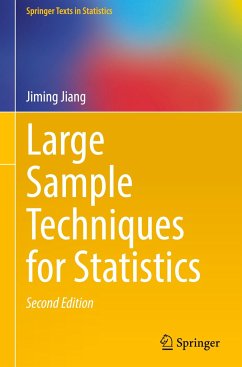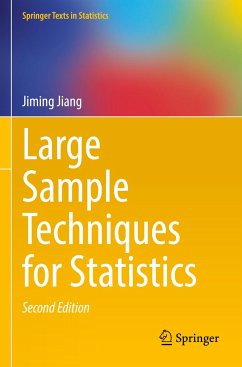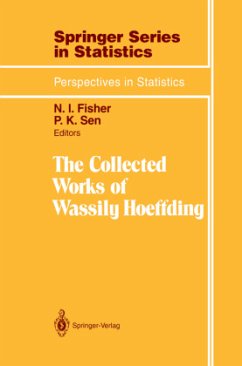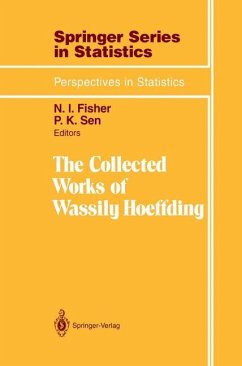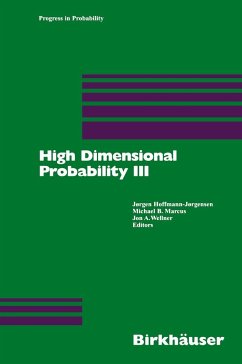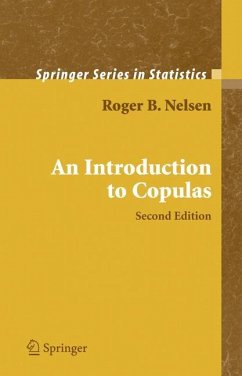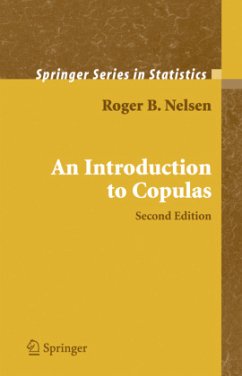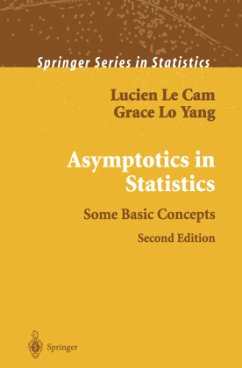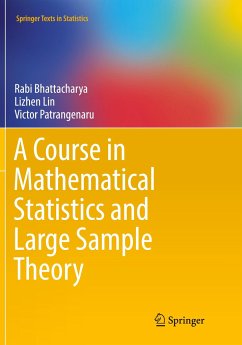
Large Sample Techniques for Statistics
Versandkostenfrei!
Versandfertig in 6-10 Tagen
65,99 €
inkl. MwSt.
Weitere Ausgaben:

PAYBACK Punkte
33 °P sammeln!
This book offers a comprehensive guide to large sample techniques in statistics. More importantly, it focuses on thinking skills rather than just what formulae to use; it provides motivations, and intuition, rather than detailed proofs; it begins with very simple techniques, and connects theory and applications in entertaining ways. The first five chapters review some of the basic techniques, such as the fundamental epsilon-delta arguments, Taylor expansion, different types of convergence, and inequalities.
The next five chapters discuss limit theorems in specific situations of observational data. Each of the first 10 chapters contains at least one section of case study. The last five chapters are devoted to special areas of applications. The sections of case studies and chapters of applications fully demonstrate how to use methods developed from large sample theory in various, less-than-textbook situations.
The book is supplemented by a large number of exercises, giving the readers plenty of opportunities to practice what they have learned. The book is mostly self-contained with the appendices providing some backgrounds for matrix algebra and mathematical statistics. The book is intended for a wide audience, ranging from senior undergraduate students to researchers with Ph.D. degrees. A first course in mathematical statistics and a course in calculus are prerequisites.
The next five chapters discuss limit theorems in specific situations of observational data. Each of the first 10 chapters contains at least one section of case study. The last five chapters are devoted to special areas of applications. The sections of case studies and chapters of applications fully demonstrate how to use methods developed from large sample theory in various, less-than-textbook situations.
The book is supplemented by a large number of exercises, giving the readers plenty of opportunities to practice what they have learned. The book is mostly self-contained with the appendices providing some backgrounds for matrix algebra and mathematical statistics. The book is intended for a wide audience, ranging from senior undergraduate students to researchers with Ph.D. degrees. A first course in mathematical statistics and a course in calculus are prerequisites.
In a way, the world is made up of approximations, and surely there is no exception in the world of statistics. In fact, approximations, especially large sample approximations, are very important parts of both theoretical and - plied statistics.TheGaussiandistribution,alsoknownasthe normaldistri- tion,is merelyonesuchexample,dueto thewell-knowncentrallimittheorem. Large-sample techniques provide solutions to many practical problems; they simplify our solutions to di?cult, sometimes intractable problems; they j- tify our solutions; and they guide us to directions of improvements. On the other hand, just because large-sample approximations are used everywhere, and every day, it does not guarantee that they are used properly, and, when the techniques are misused, there may be serious consequences. 2 Example 1 (Asymptotic? distribution). Likelihood ratio test (LRT) is one of the fundamental techniques in statistics. It is well known that, in the 2 "standard" situation, the asymptotic null distribution of the LRT is?,with the degreesoffreedomequaltothe di?erencebetweenthedimensions,de?ned as the numbers of free parameters, of the two nested models being compared (e.g., Rice 1995, pp. 310). This might lead to a wrong impression that the 2 asymptotic (null) distribution of the LRT is always? . A similar mistake 2 might take place when dealing with Pearson's? -test-the asymptotic distri- 2 2 bution of Pearson's? -test is not always? (e.g., Moore 1978).





